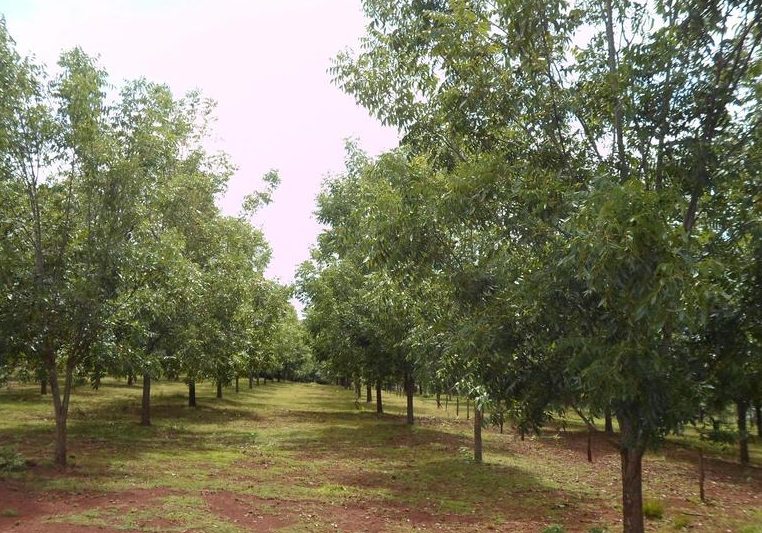Crop Production

Pecan trees are a popular crop for many home producers and commercial farmers. There are several pests that affect pecan trees including pecan scab, pecan phylloxera, fall webworm, twig girdlers, hickory shuckworm, stink bug, pecan weevil, black pecan aphids, and several others. These pests can greatly decrease the productivity of the tree. Producers with small plantings cannot spray big pecan trees like the commercial growers. However, proper management practices—such as planting disease resistant trees, proper fertilization, and other management recommendations—will help pecan production.
Fertilization
In an established pecan orchard, fertilization is a great way to increase production. A soil test is the best way to know how much to fertilize pecan trees. Also, a commercial pecan grower can have a nutrient analysis run on the leaves to help determine nutrient deficiencies. You county’s Extension office can help explain that process. It is much easier to help a grower determine what nutrients the crop needs if they begin the process knowing which nutrients are already present. The pecan fertilization information can be found on the Alabama Extension website or by calling your county Extension office. Remember that many pecan trees tend to be alternate bearers. This means if they produce a heavy crop one year, they may produce a light crop the next year. Maintaining the fertility program in the heavy, as well as the light crop years, is best. A proper fertilization program is very important, but there are other things you can also do to increase production.
Disease
As mentioned earlier, scab is a major disease of pecan trees and planting scab resistant trees is highly recommended for anyone on a small scale that does not have the ability to spray. Some of the recommended pecan trees that are scab resistant are hard to find at nurseries and may need to be ordered a year in advance. Some pecan scab resistant cultivars recommended for home planting include the following:
- Amling
- Adams 5
- Miss L
- Prilop
- Kanza
- Headquaters
- Lakota
- McMillian
- Elliott
- Avalon
- Gafford
These pecan cultivars do not produce the largest pecans. It is difficult for homeowners to properly manage pest problems so that large pecans can fill out properly. Pecan nursery sources and much more information on pecan trees are listed on the Alabama Pecan Growers website, www.alabamapecangrowers.com.
Pollination
Cross-pollination should be considered when planting pecan trees. Pecan trees are monoecious, which means they produce both female and male flowers on the same tree. However, that does not necessarily mean they are self-fertile. All of the male flowers do not shed pollen when all of the female flowers are receptive. Pecan trees are divided into two categories: type I and type II. Type I trees are called protandrous, and those trees shed pollen first before the female flower is receptive. The type II trees are termed protogynous, and the female blooms are receptive to pollen before the male bloom sheds pollen. For this reason, a grower would need a mixture of type I and type II trees for proper pollination. Pecan trees shed a lot of pollen so it does not have to be equal numbers of type I and type II trees, but they do need to be planted in the same area, as pollen is moved from one tree to another by wind.
Tree Spacing
When planting new trees, the spacing should be approximately 80 to 100 feet apart. Commercial farmers will plant much closer, but they also have the ability to spray the trees to manage pests. A wider spacing will allow more sunlight and more air circulation. Some growers will plant at a very close spacing to achieve more production per acre at a young age. Eventually, the grower will remove trees to the desired spacing and keep the production of the orchard increasing. Removing trees from an overcrowded orchard can increase production. If a grower is not willing to remove overcrowded trees at a later time, planting on a wider spacing in the beginning may be the best idea.
A large weed-free/grass-free zone of about a 10 foot radius or more around the trunk is desirable. Mulching the trees in that weed-free zone will also help. It may be hard for a small grower to irrigate, but irrigation during any dry periods—and especially during August and September—would be beneficial.

